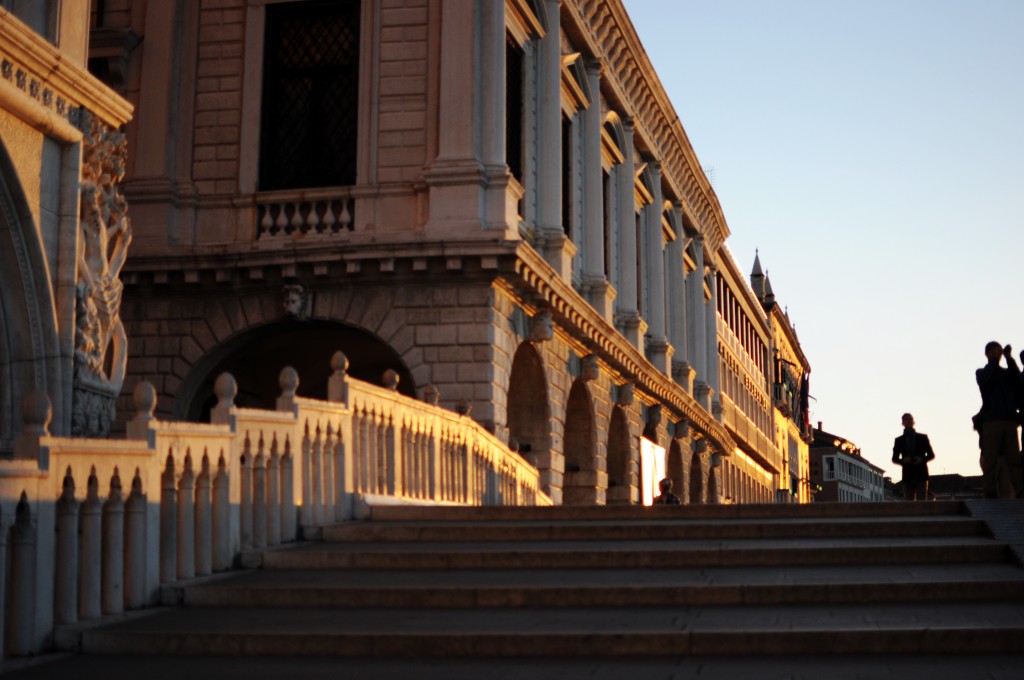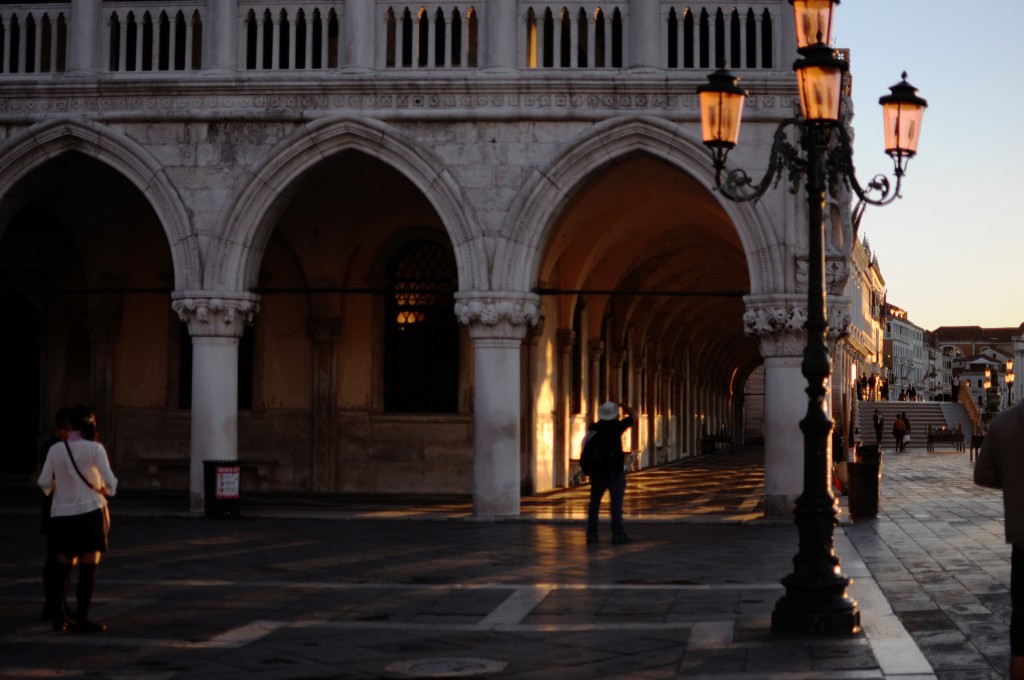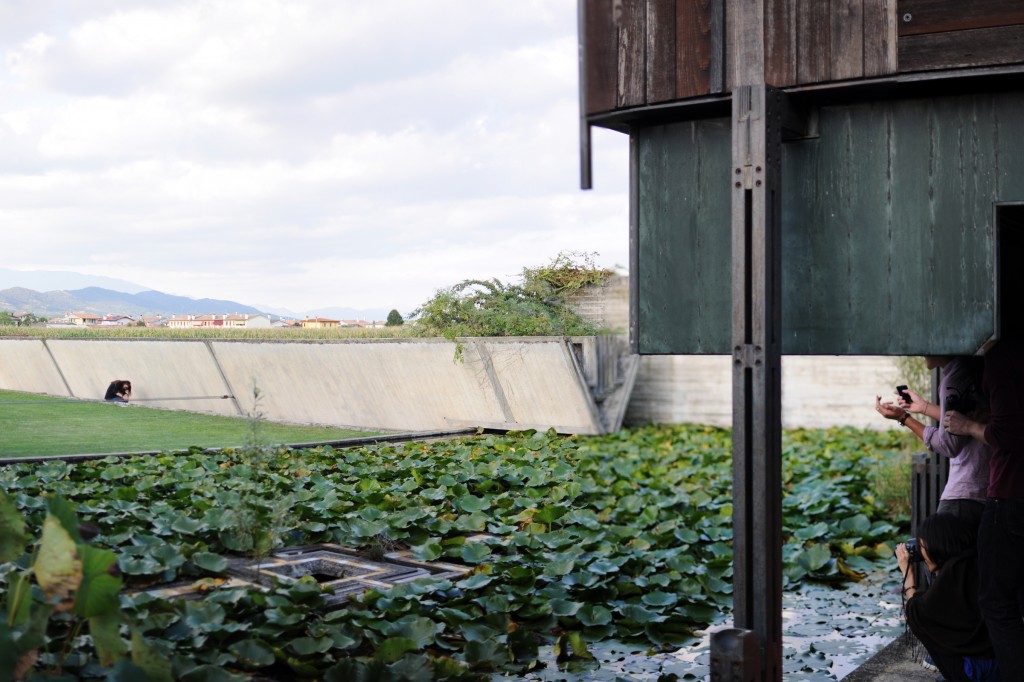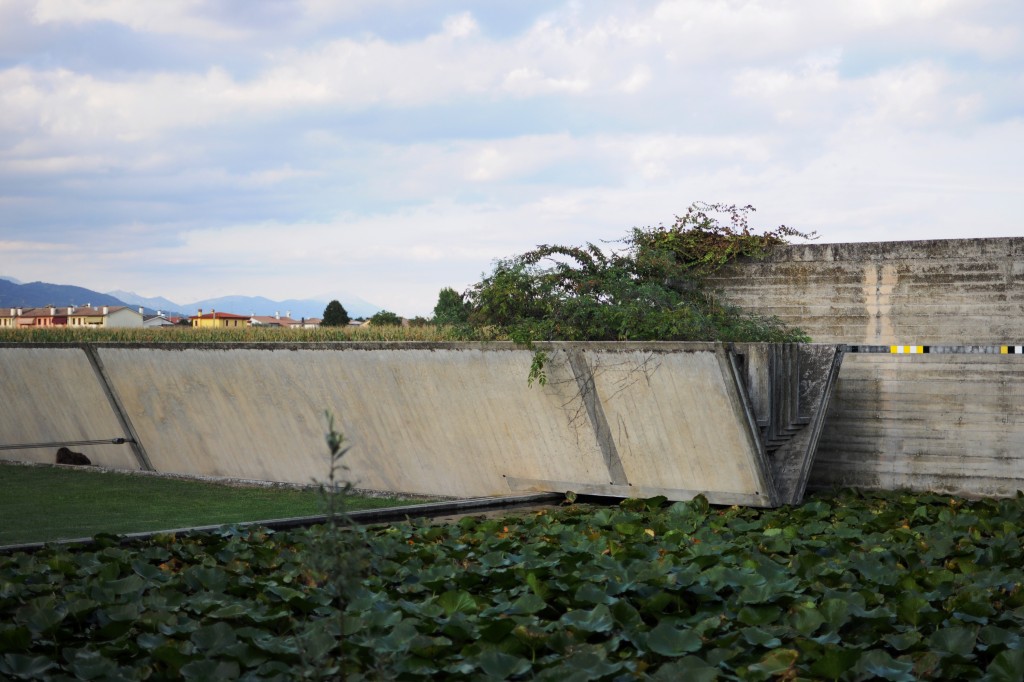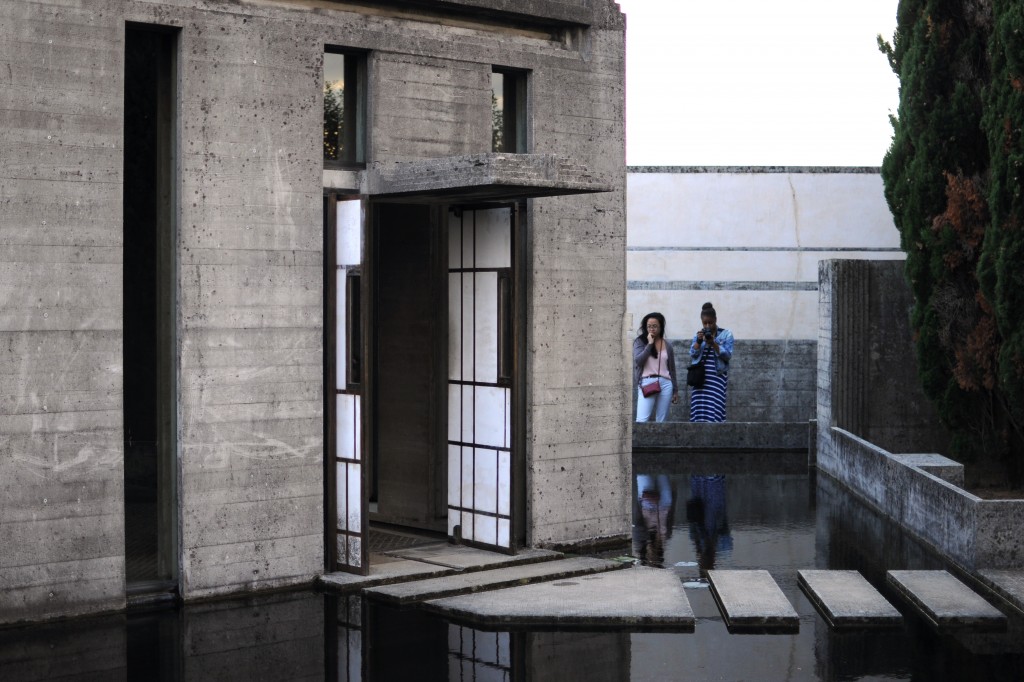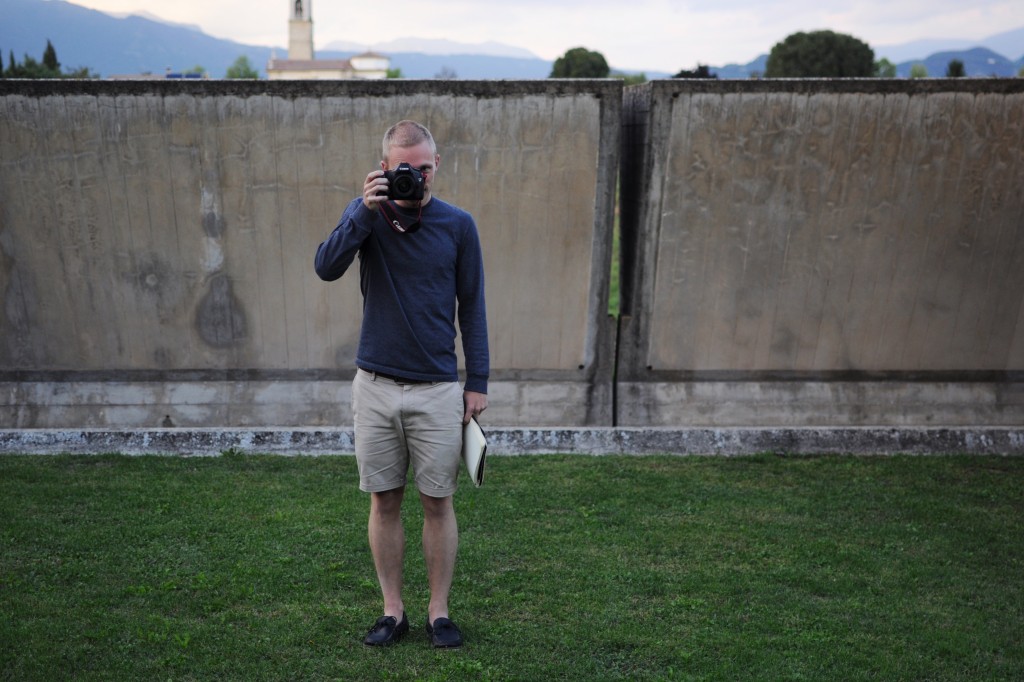Last week, we went on an eight day trip to northern Italy. We made many stops – Arezzo, Sansepolcro, Città di Castello, Urbino, Rimini, Ravenna, Padova, Maser, San Vito in Altivole, Verona, Mantova, and Venezia – and it would be incredibly futile for me to talk about everything I saw in these beautiful places. Instead, I will tell about my three favourite experiences of the trip. Although this won’t come even close to covering the quantity of things we did, perhaps it will at least show the breadth of different places we visited.
Piero della Francesca
The first day of the trip was partially dedicated to visiting frescoes by the great Italian Renaissance court painter, Piero della Francesca. Having never taken art history, I only knew about him from architectural references. Della Francesca is well known by architects and artists alike for his very beautiful and structured compositions. His every construction line is perfectly considered and positioned, and it was amazing to see this on a large scale and in its original location.
The first city we stopped in was Arezzo. There we visited the Basilica di San Francesco, the apse of which was covered by incredible della Francesca frescoes. Unlike paintings, which can be lent from one museum to another and be exposed to a large number of people, a fresco obviously cannot be moved to another location. That means that only a small population of “pilgrims” like us will ever see them in situ.
Della Francesca’s work was very beautiful. One of my favorites was a painting on wood called Madonna della Misericordia, which we saw in a museum in Sansepolcro, the artist’s hometown.
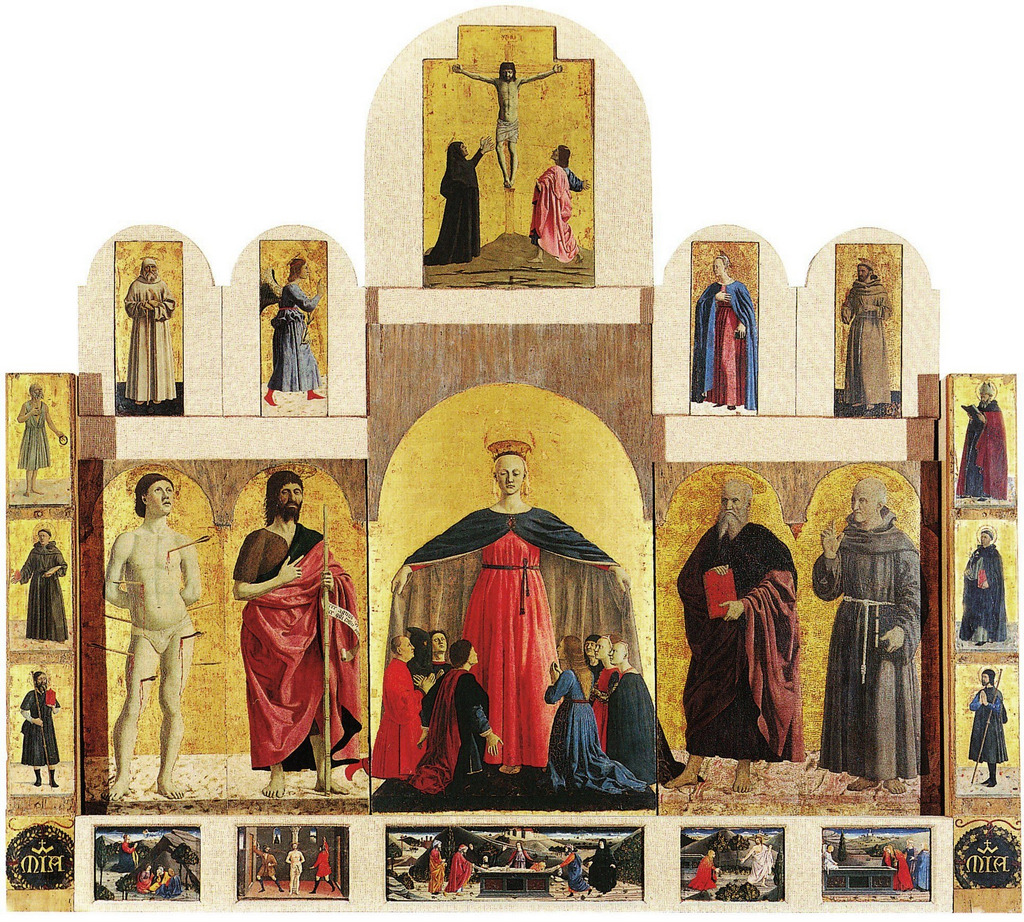
(Source: http://www.atlantedellarteitaliana.it/artwork-13338.html)
The layout of the work was particularly interesting, because it was laid out on several large wood panels, but the colours impressed me the most. It seemed as if the only colors della Francesca used here were blue, red, and gold. It is not obvious from the image I included, but even the skin tones are blue-ish.
Venice at dawn
One of the main purposes of the trip was to visit Venice and see the site we would be working on for our semester studio project (more on that in another post…). Because we only had three days to visit and learn about a city we would be designing in, our days were packed. On our last day in the city, we visited our site in the pouring rain, and came back to our hotel. We had been planning on going out to explore the nightlife, but this didn’t work out for two main reasons: we were exhausted and cold, and, more importantly, we would have had to travel far from the historic centre where we were staying to find something less touristy. In the end it probably came down to laziness and the rain. Either way, I went to bed early that night and promised myself I would go on an early walk the next morning before leaving.
I awoke at the crack of dawn to a beautifully crisp day. On my way out of the hotel I ran into one of my professors, Davide, who was going out to get coffee. He wasn’t the only one: even though the tourists were still sleeping, the city was slowly beginning to stir. Realizing I didn’t have enough time to really explore and let myself get lost, I decided to just walk to Piazza San Marco.
It was breathtaking. I was one of only a handful of people in the immense piazza, and all of us were taking photographs of this most photogenic scene. Every building seemed painted peach. The early morning sun was hitting the pink street lights at just the right angle to make them glow. The obelisk lions were beautifully silhouetted against the rising sun. As I walked back along the water, I decided that Venice really might be the most beautiful place in the world, if you catch it at the right moment.
Carlo Scarpa’s Brion Cemetery
Scarpa blew my mind. We saw three of his buildings: Banco Popolare di Verona, the Museo di Castelvecchio restoration, and the Brion family cemetery in San Vito in Altivole. I really cannot describe this cemetery, but it left a huge impression on me. Scarpa himself was buried there when he died, which shows how dear his own work must have been to him. The cemetery reads like an inhabitable sculpture, or a curated space, and it is conceptually perfect down to the tiniest detail.
A quote by my professor Jerry Wells to summarize my own experience: “It dawned on me the other day that I have been to the Brion cemetery maybe twenty times in my life and I have always had my camera on me, but I have never taken a single picture there. I don’t know why. I think I just get too excited when I’m there. So, anyway, I can’t tell you anything about that building.”
I, however, did take some pictures.

